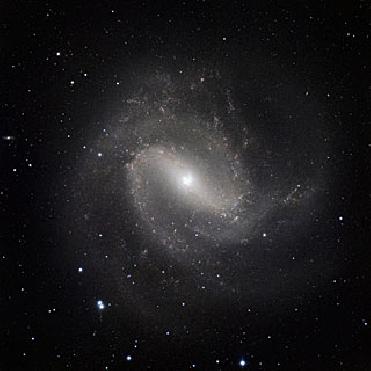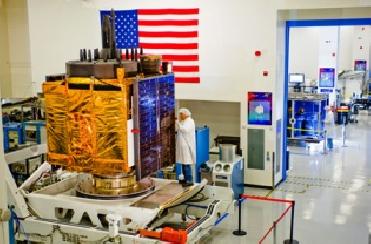
This image of the nearby galaxy Messier 83 was taken in the infrared part of the spectrum with the HAWK-I instrument on ESO�s Very Large Telescope. The very fine image quality of this camera, coupled with the huge light-collecting power of the VLT, reveals vast numbers of stars within the galaxy. The images were taken in three different parts of the infrared spectrum and the total exposure time was eight and a half hours, split into more than five hundred exposures of one minute each. The field of view is about 13 arcminutes across. ESO photo (M Gieles)
NEW DELHI (BNS): A beautiful image of the nearby galaxy Messier 83 captured by HAWK-I instrument on ESO�s Very Large Telescope (VLT) will help astronomers looking for clusters of young stars.
ESO has released the image of Messier 83 observed in the infrared part of the spectrum using HAWK-I.
When viewed in infrared light most of the obscuring dust that hides much of Messier 83 becomes transparent. The brightly lit gas around hot young stars in the spiral arms is also less prominent in infrared pictures. As a result much more of the structure of the galaxy and the vast hordes of its constituent stars can be seen.
This clear view is important for astronomers looking for clusters of young stars, especially those hidden in dusty regions of the galaxy.
Studying such star clusters was one of the main scientific goals of these observations. When compared to earlier images, the acute vision of HAWK-I reveal far more stars within the galaxy, ESO said.
The galaxy Messier 83 is located about 15 million light-years away in the constellation of Hydra. Messier 83 is famous among astronomers for its many supernovae: vast explosions that end the lives of some stars.
Over the last century, six supernovae have been observed in Messier 83 � a record number that is matched by only one other galaxy. Even without supernovae, Messier 83 is one of the brightest nearby galaxies, visible using just binoculars.
 Previous Article
Previous Article Next Article
Next Article













The Indian Air Force, in its flight trials evaluation report submitted before the Defence Ministry l..
view articleAn insight into the Medium Multi-Role Combat Aircraft competition...
view articleSky enthusiasts can now spot the International Space Station (ISS) commanded by Indian-American astr..
view article